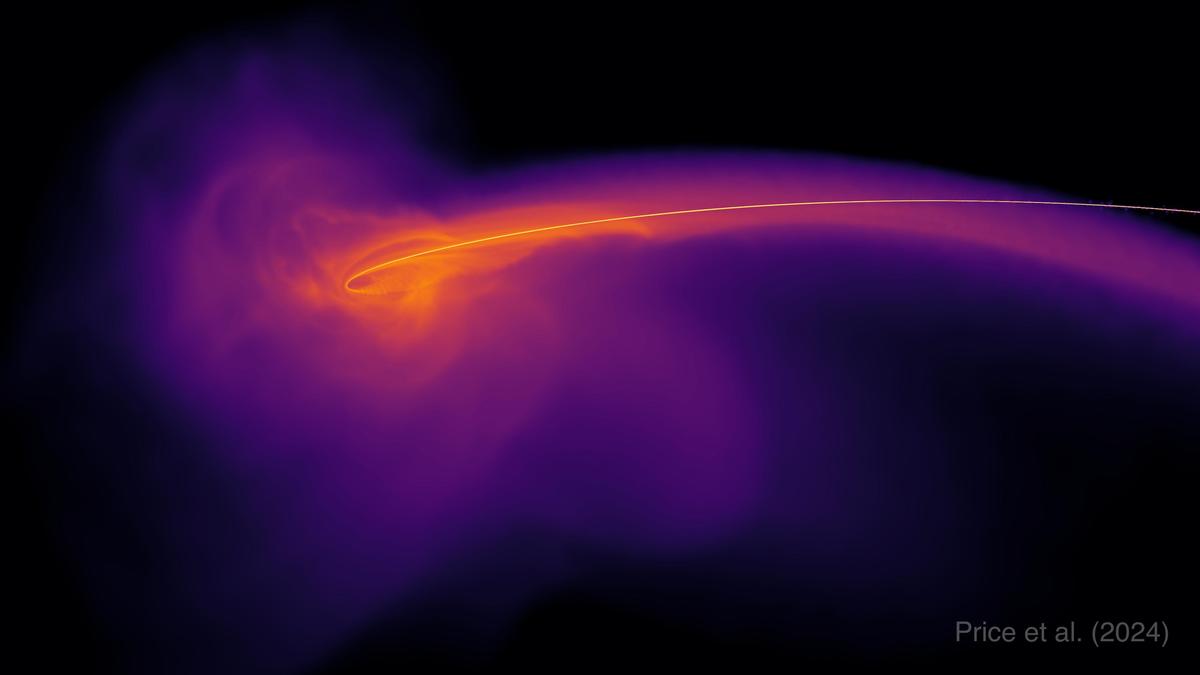For all its apparent serenity, the universe is a very violent place teeming with cataclysmic events: from colliding galaxies and supernovae (the explosive deaths of massive stars), to immensely powerful geysers of X-rays and black holes that gobble up stars.
In this deafening cosmic din, astronomers have always considered gamma-ray bursts (GRBs), produced during the formation of black holes, to be the most powerful flare-ups in the universe. Incredibly energetic GRBs traverse vast distances, making them the most luminous electromagnetic events since the Big Bang, the accepted cosmological model to explain the origin and evolution of the universe.
But recently, astronomers from the University of Hawaii’s Institute for Astronomy (IfA) identified a new category of events that they found to be much more powerful than GRBs: extreme nuclear transients (ENTs). In astronomy, transients refer to celestial objects whose brightness changes significantly over a relatively short period.
Inscrutable creations
The IfA findings, published recently in Science Advances, described extraordinary phenomena that occurred when extremely big stars wandered too close to gargantuan black holes in galactic centres and literally got eaten up. Their fate was much like that of Icarus in Greek mythology, who flew too close to the sun on wings of wax and feathers only for the wings to melt, causing him to plummet to his death.
“ENTs are powered by accretion from the debris of a massive star at least three-times heavier than our sun that has been ripped apart by a supermassive black hole,” Jason Hinkle, the lead author of the IfA study, wrote to the author.
Black holes are one of nature’s most inscrutable creations and supermassive black holes that lurk near the centres of galaxies are the biggest of them all. There is one in the Milky Way galaxy, too: Sagittarius A*.
As a star nears a black hole’s event horizon — its outer edge that marks the point of no return for even light — extreme tidal forces stretch and compress the star into a long, thin spaghetti-like shape, releasing enormous amounts of electromagnetic energy. This emission is the ENT.
These brilliant space streamers traverse immense distances and remain luminous in radio wavelengths for years, making it possible for astronomers to study them. In fact, ENTs are so powerful that astronomers now believe they are the “biggest explosions” to have taken place since the Big Bang.
“ENTs are the most energetic class of transient events yet discovered,” Dr. Hinkle said. “They emit up to ten-times more energy than the previous record holders.”

Torn apart
Dr. Hinkle stumbled on to ENTs when sifting through data from the European Space Agency’s Gaia spacecraft, which mapped the Milky Way for more than a decade.
“We were looking for smooth, high-amplitude, and long-lived events,” he said. “In 2020, we began following two sources I had identified in 2016 and 2018 in the Gaia data with space-based UV/X-ray missions and ground-based spectroscopy to measure physical parameters, which gave the first indications that we were seeing something special.”
When the Zwicky Transient Facility [which scans the entire Northern sky every two days using an extremely wide field of view camera at the Palomar observatory in California] published data on a third similar event in 2023, it gave additional confidence that we had found a rare, new class of transient phenomena,” he added.
Astronomers have previously observed stars being torn apart in tidal disruption events (TDEs), which happens when a star is pulled apart by a black hole’s tidal forces, releasing the energy equivalent of more than a hundred supernovae in the process. In that sense, TDEs share many similarities with ENTs, including hot temperatures, brilliant emissions, and broad emission lines. But the two are actually quite different.
“The host galaxies of ENTs are much larger than that of a TDE and have a more massive central black hole,” Dr. Hinkle explained. “ENTs are also much rarer than the TDEs we observe in the local universe. However, we think that ENTs are TDEs of massive stars that are just too rare to observe in the nearby universe.”
ENTs also differ from the mysterious fast X-ray transients (FXTs), short-lived bursts of X-rays from distant galaxies that have puzzled astronomers since they were first found in the 1970s. The origins of FXTs remained elusive largely because their signals are less energetic and more fleeting than traditional X-ray driven GRBs.

In extreme light
Despite an exhaustive search, which even included candidate sources such as TDEs where a small black hole interacted with a white dwarf, astronomers couldn’t determine where FXTs originated. The mystery was finally solved in June when researchers from Northwestern University in the US and the University of Leicester in England discovered FXTs actually arose from high energy particles trapped inside a supernova.
It turned out that when high-energy particle jets break through a star’s outer layers, they produce GRBs. But if these jets are contained within the star, they release lower-energy X-ray signals that we observe as FXTs. In other words, unlike ENTs, FXTs are essentially an X-ray phenomenon that occurs on very short timescales.
Astronomers are excited about the prospect of observing the universe in the light of the extreme luminosity of ENTs.
As Dr. Hinkle said: “By building a sample of ENTs, we can study massive black holes in the early universe, especially the large majority of those that are not otherwise accreting, serving as an excellent complement to studies of accreting black holes in the early universe.”
This will be made easier by a new generation of telescopes and instruments with AI-powered data analysis, such as the Vera C. Rubin Observatory in Chile and the Nancy Grace Roman Space Telescope, scheduled to be launched in 2027. They promise to revolutionise our understanding of the extreme physics behind a universe filled with cosmic destruction on such immense scales.
Prakash Chandra is a science writer.
Published – September 22, 2025 05:30 am IST
